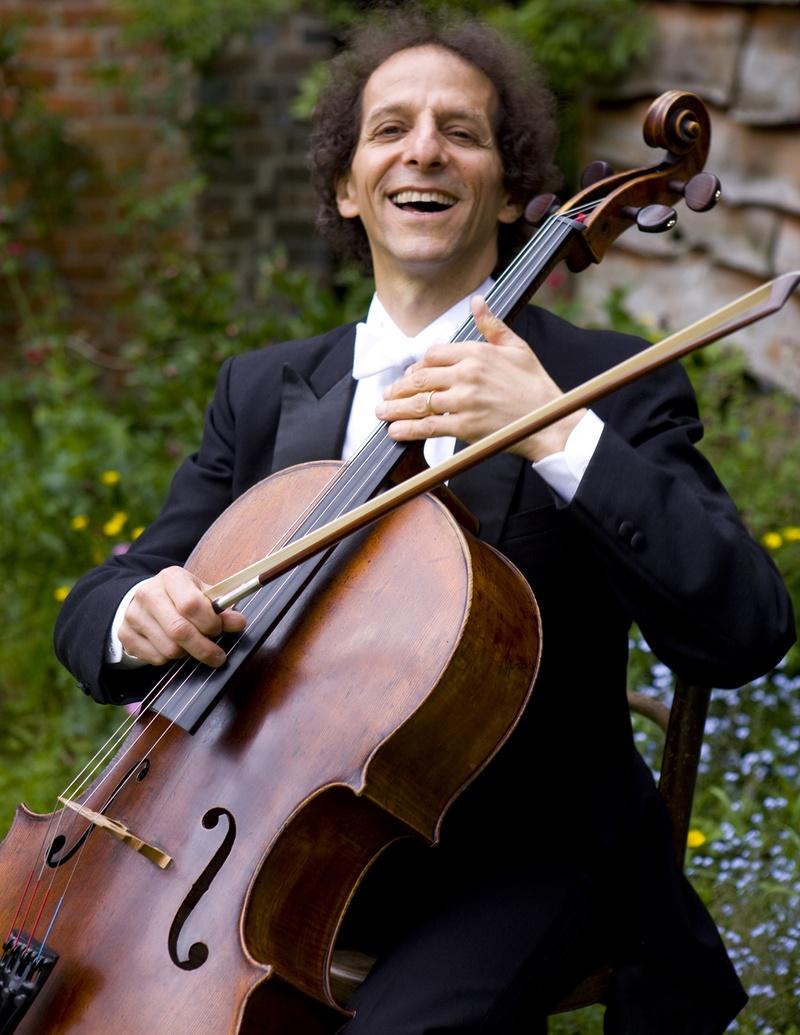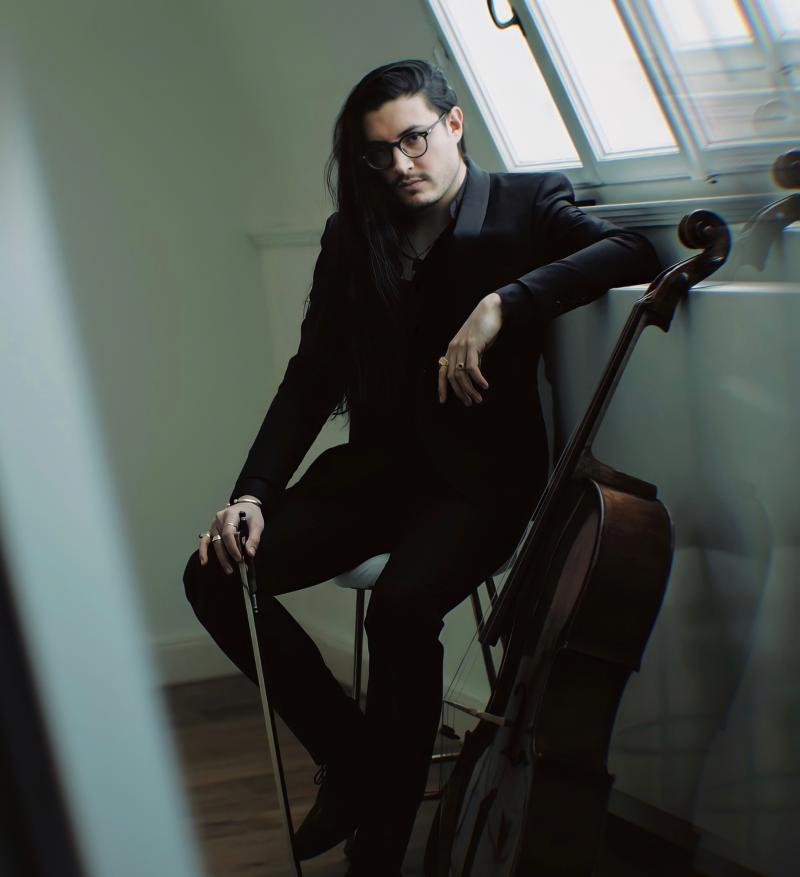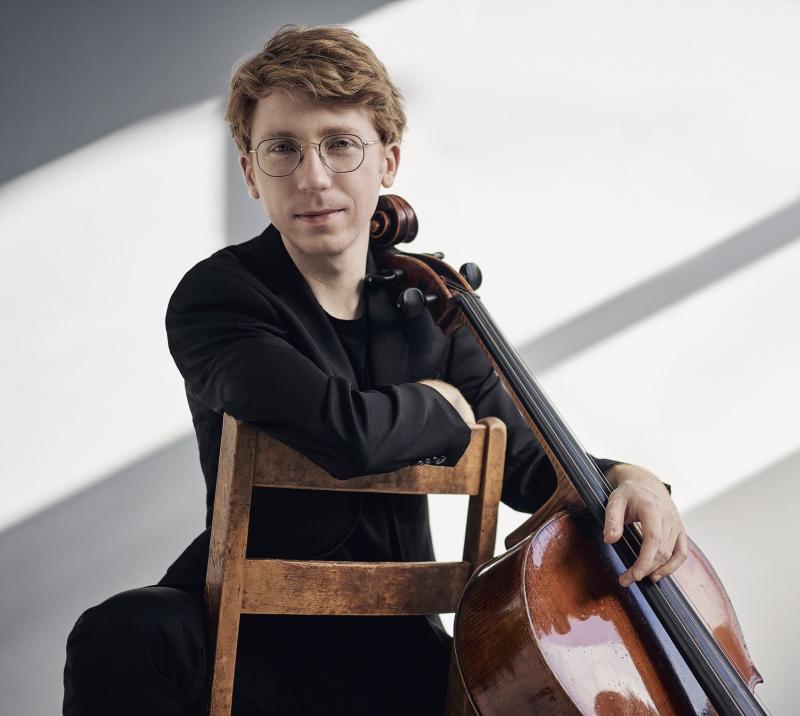SOLD OUT!
2 / BETWEEN EARTH & SKY
7.30pm, Tuesday, October 28
Crescent Arts Centre, 525 Wardlaw Ave.
International Cello Festival of Canada Opening Concert
Colin Carr, Denise Djokic, Santiago Cañón-Valencia, Matthias Bartolomey, Cameron Crozman, Inbal Segev, cellos
Anne Manson, conductor
*SOLD OUT!
The cello’s rich, expressive voice takes centre stage in this powerful opening to the Cello Festival, reflecting the instrument's dual nature — rooted in the depths of the earth yet simultaneously reaching skyward.
Since 2011, the International Cello Festival of Canada has been bringing renowned cellists and artists from around the world to Winnipeg for an unforgettable celebration of music. Here, we're pleased to present the immense talents of Colin Carr, Denise Djokic, Santiago Cañón-Valencia, Matthias Bartolomey, Cameron Crozman, and Inbal Segev to celebrate the opening of the Festival.
-
Antonio Vivaldi
Concerto for Two Cellos
Alexina Louie
Bringing the Tiger Down from the Mountain
Jacques Hétu
Rondo for Cello and Strings
Joseph Haydn
Concerto in D
C.P.E. Bach
Cello Concerto in A
Joseph Haydn
Cello Concerto in C
Program subject to change
-
Concert Sponsor: Johnston Group
Guest Artist Sponsor: Sarah, Ted, and Gemma Yates-Howorth in memory of Sarah’s sister, Ruth Mellergaard
Music Director Sponsor: Sandi & Ron Mielitz
Concertmaster Sponsor: Judith Hall
-
Join us for a Pre-Concert Event at 6:45pm featuring the Mega Student Cello Orchestra under the direction of Andrea Bell!
ONLINE PROGRAM

Manitoba Chamber Orchestra
Anne Manson, Music Director
MCO 2 / BETWEEN EARTH & SKY
7:30pm, Tuesday, October 28, 2025
International Cello Festival of Canada Opening Concert
Colin Carr, Denise Djokic, Santiago Cañón-Valencia, Matthias Bartolomey, Cameron Crozman, Inbal Segev, cellos
Anne Manson, conductor
Concert Sponsor: Johnston Group
Guest Artist Sponsor: Sarah, Ted, and Gemma Yates-Howorth in memory of Sarah’s sister, Ruth Mellergaard
Music Director Sponsor: Sandi & Ron Mielitz
Concertmaster Sponsor: Judith Hall
Media Sponsors: Winnipeg Free Press and Classic 107
Hotel Partner: Inn at the Forks
Manitoba Chamber Orchestra gratefully acknowledges the support of Canada Council for the Arts, Manitoba Arts Council, Winnipeg Arts Council, The B.A. Goodman, M.E.M. Goodman and Dorothy Jean Goodman Foundation, Richardson Foundation, and The Winnipeg Foundation.
First Violin
Stephen Sitarski, Concertmaster
Erika Sloos
Mary Lawton
Chris Anstey
Narumi Higuchi
Heather Stewart
Second violin
Rachel Kristenson, Principal
Liudmyla Prysiazhniuk
Boyd MacKenzie
Mona Coarda
Sarah Harrington
Kristina Bauch
Viola
Pamela Fay, Principal
Jennifer Thiessen
Margaret Carey
Laszlo Baroczi
Cello
Desiree Abbey, Principal
Minna Rose Chung
Bery Barthol Filsaime
Patricia Vanuci
Double bass
Martin Blanchet, Principal
Jacques Forest
Oboe
Caitlin Broms-Jacobs, Principal
Tracy Wright
French horn
Valérie Tremblay, Principal
Rachel Côté
Harpsichord
Will Bonness
The Manitoba Chamber Orchestra concert series and offices are located on Treaty 1 Territory and the ancestral lands of the Anishinaabeg, Ininiwak, Anishininewuk, and Dakota Oyate peoples, and the National Homeland of the Red River Métis. Our water is sourced from Shoal Lake 40 First Nation. We are grateful to the traditional caretakers of this land.
Concert etiquette: please silence and reduce brightness on phones and devices. Recording concerts is not permitted. Please use appropriate intervals for washroom breaks. The MCO strives for a scent-free environment to protect those with allergies. The MCO is a mask-friendly environment.
Antonio Vivaldi
Concerto for Two Cellos (12 minutes)
Allegro (moderato)
Largo
Allegro
Alexina Louie
Bringing the Tiger Down from the Mountain (7 minutes)
Jacques Hétu
Rondo for Cello and Strings (6 minutes)
Joseph Haydn
Concerto in D (25 minutes)
Allegro moderato
Adagio
Allegro (Rondo)
Intermission (15 minutes)
C.P.E. Bach
Cello Concerto in A (20 minutes)
Allegro
Largo
Allegro assai
Joseph Haydn
Cello Concerto in C (23 minutes)
Moderato
Adagio
Allegro molto
About Colin Carr
Colin Carr appears throughout the world as a cello soloist and chamber musician. He has played with major orchestras worldwide, including the Royal Concertgebouw Orchestra, Royal Philharmonic, and BBC Symphony; the orchestras of Chicago, Los Angeles, Washington, Philadelphia, and Montréal; and all the major orchestras of Australia and New Zealand. He has played recitals throughout the United States and Europe, and was a member of the Golub-Kaplan-Carr Trio for 20 years. He is a frequent visitor to international chamber music festivals worldwide and has appeared often as a guest with the Guarneri and Emerson string quartets and with New York’s Chamber Music Society of Lincoln Center.

About Denise Djokic
As a soloist, Denise Djokic has performed with most of Canada's major orchestras, including the Toronto, Vancouver, Quebec, Calgary, and Edmonton Symphonies, as well as Montreal's Orchestre Metropolitain and the National Arts Centre Orchestra. Internationally, she has performed with orchestras including the North Carolina Symphony, Buffalo Philharmonic, Sinfonieorchester Aachen (Germany), The Academic Orchestra of Zürich (Switzerland), and Amazonas Philharmonic (Brazil). She has been named one of the top "25 Canadians Who Are Changing Our World" by Maclean's Magazine, one of "Canada's Most Powerful Women" by Elle Magazine, and won first prize at the Irving M. Klein International String Competition.

About Santiago Cañón-Valencia
Colombian cellist Santiago Cañón-Valencia is a prolific soloist, composer, commissioner, recording artist, painter, and photographer described as "technically flawless… totally under the skin of the composers' idioms" (The Strad). Named a BBC Next Generation Artist in 2022, Cañón-Valencia was born in Bogotá in 1995 and made his orchestral debut as a soloist when he was six years old with the Orquesta Filarmónica de Bogotá, blossoming into an accomplished musician praised as "an artist from whom sound and texture flow with ease and authenticity" (The Whole Note) and "one of the most promising young cellists" (Forbes Colombia).

About Matthias Bartolomey
Matthias Bartolomey was born in 1985 in Vienna, Austria. He started to play the cello at the age of seven and took his first lessons with his father Franz Bartolomey. He became a student of Prof. Valentin Erben at the University for Music and Performing Arts in Vienna in 1995. From 2007 he studied with Prof. Clemens Hagen at the University Mozarteum in Salzburg where in 2010 he completed his studies with a Masters degree.
In 2012, together with violinist and mandola player Klemens Bittmann, Bartolomey formed the progressive string duo BartolomeyBittmann. With exclusively original compositions, they are leading their instruments out of their deeply-rooted classical tradition to new musical pathways, incorporating the elements of jazz and rock.
Since October 2020 Matthias has been teaching as a professor at the University Mozarteum Salzburg.

About Cameron Crozman
“With a rich imagination and a keen mind” (Diapason Magazine), Canadian cellist Cameron Crozman leads an active performing career as a soloist and chamber musician in Canada, the USA, and Europe. He has appeared as a soloist with the Orchestre National d'Ile-de-France (Paris), Montreal, Winnipeg, Hamilton, and Vancouver Island Symphonies among others, and performances have taken him everywhere from the Philharmonie de Paris and the Shanghai Oriental Arts Centre, to the Qidi Vidi Brewery of St. John’s, Newfoundland. An avid collaborator and chamber musician, Cameron shares the stage with eminent artists such as James Ehnes, Augustin Hadelich, Louis Lortie, Gérard Caussé, James Campbell, and members of the Ébène, New Zealand, and Penderecki String Quartets.

About Inbal Segev
Inbal Segev is “a cellist with something to say” (Gramophone). Combining rich tone and technical mastery with rare dedication and intelligence, she has appeared with renowned orchestras and collaborated with conductors throughout the United States and Europe. Recorded with Alsop and the London Philharmonic for Avie Records, Segev’s premiere recording of Clyne’s new cello concerto, DANCE, was an instant success, topping the Amazon Classical Concertos chart. Its opening movement was chosen as one of NPR Music’s “Favorite Songs of 2020,” receiving more than twelve million listens on Spotify. To encourage creative recovery during the early pandemic lockdowns, Segev launched 20 for 2020, a commissioning, recording, and video project for 20 cutting-edge composers, including John Luther Adams, Viet Cuong, and Angélica Negrón, all of whom wrote new works in response to the worldwide crisis.

The dulcet tones of the double bass, the piercing cries of the violin—these sounds and more are contained within the cello’s expansive range. Today we celebrate the legacy of the cello alongside some of its best practitioners. From the virtuosity of Antonio Vivaldi and C.P.E. Bach to the striking modernity of Jacques Hétu, this program celebrates the full range of cello repertoire.
What better way to begin a concert than with Vivaldi? In his Concerto for Two Cellos, the Italian composer centres the two instruments in a way considered highly unusual for its time. The piece is urgent, and the interplay between the two cellos notably lacks much of the ornamentation present in Baroque repertoire. It’s as if Vivaldi intends the listener to be drawn in by the feverish conversation, a message that retains its intensity and clarity all these centuries later.
We break for a moment, entering the playful and sprightly world of Joseph Haydn. Don’t be fooled, however: the Concerto in D is deceptively difficult repertoire for the cello player. Haydn’s tuneful melody frequently finds itself in the soprano range, something that, while easier for modern players, was incredibly difficult for musicians in the 18th century.
As wonderful as the cello is in Western art music, the work of Alexina Louie demonstrates how its power crosses borders and cultures. In Bringing the Tiger Down from the Mountain (named after the Tai Chi position), we see how she incorporates Eastern and Western sensibilities in the service of articulating her pluralistic identity. The cello and piano perfectly represent this, exploring new ways of interacting even as they remain grounded.
Up next is something quite special: Jacques Hétu is rarely heard in Winnipeg, and there is no one better to show us his music than Cameron Crozman. The Rondo for Cello and Strings is an exuberant and eclectic piece that echoes the folk-inspired music of Béla Bartók and the angular tonality of Alban Berg.
From modern to classic, we move to the stormy work of C.P.E. Bach. You may wonder if this is a fair characterization: the first two movements of the Cello Concerto in A are light and airy. But make no mistake about it: Bach follows them up with a torrential third movement, fulfilling his status as the inventor of the Sturm und Drang music style.
Finally, we return to Haydn. The Cello Concerto in C stands as one of the crown jewels among cello repertoire, an astonishing feat despite its relatively young age — it was only discovered in 1961! You won’t need to search for the cello part in the orchestra: just listen for the sustained high note, which Haydn uses to distinguish the soloist. The final movement stands as one of the most striking moments in the solo cello repertoire. As the soloist gets going, the cello line separates into a higher and lower line. If you close your eyes, it almost sounds like a duet—a fitting demonstration of this incredible instrument.
- Program notes written by Lukas Sawatsky



